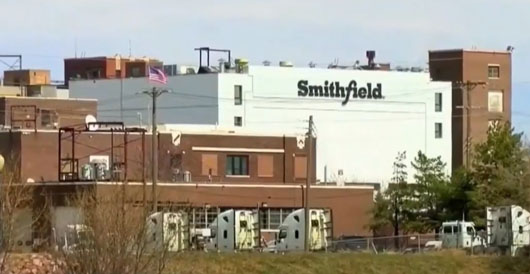by WorldTribune Staff, April 19, 2020
The Committee for a Responsible Federal Budget has projected that debt held by the public due to the coronavirus crisis “will exceed the size of the economy by the end of Fiscal Year 2020 and eclipse the prior record set after World War II by 2023.”

The budget-focused think tank’s projection doesn’t include “what’s almost certain to be another multi-trillion-dollar stimulus package or two, or three, in the near future… it would not surprise me if the direct federal cost of COVID-19 is something north of $10 trillion,” investor Morgan Housel wrote for the Collaborative Fund blog.
A study by Alexander Bick of Arizona State and Adam Blandin of Virginia Commonwealth University found that, between March 29 and April 4, the employment rate increased from 4.5 percent to 20.2 percent and “those who still have their jobs are working fewer hours; 21 percent report a decline in earnings.”
The federal government will run a $3.8 trillion deficit in 2020 and $2.1 trillion in 2021, Housel noted. “I’ve heard many people ask recently, ‘How are we going to pay for that?’ With debt, of course. Enormous, hard-to-fathom, piles of debt.”
Housel said that his best guess “is that sometime in the next few years we’ll have the biggest tax increase since the end of World War II, regardless of who’s president. Spending will come down from current levels but stay higher than it was before the crisis as enhanced unemployment benefits become permanent. Debt will never actually decline; it will rise every year.”
The Wall Street Journal’s James Freeman noted on April 17 that, before Americans get too depressed, they might want to consider “a highly uplifting piece” which appears in the most unlikely of places, The New York Times.
Caitlin Dickerson and Miriam Jordan report for the Times on employees at South Dakota’s Smithfield pork-processing facility which the Times calls “the nation’s largest single-source coronavirus hot spot. Its employees now make up about 44 percent of the diagnoses in South Dakota.”
Freeman noted that the Times article “amazingly, manages to show the tough, striving American can-do spirit while exposing the costs of shutdowns and rebutting the claims of immigration opponents all in one fell swoop. The story even manages to highlight the opportunities available in lightly-governed South Dakota compared to blue-state alternatives.”
Given the recent infection at the plant one might expect the Smithfield workers to be the most supportive of stay-at-home orders. But according to the Times account:
“I can’t wait to go back to work for the simple reason that this is the only thing that supports my family,” said Achut Deng, a Sudanese refugee who in six years worked her way up from a “wizard knife” operator paid $12.75 an hour to a shift lead making $18.70. “I do feel sorry for everyone who is going through this, I feel sorry for myself, but it’s like, I feel better now so I’d rather go back to work.”
…many workers said that the grueling work at the plant, before the virus hit, had offered them a life that otherwise would never have been possible as immigrants and refugees… “Honestly, I was able to improve myself,” said Yoli Hernandez, a single mother of four from El Salvador, who started at the plant in 1999 and earns $17.30 an hour. “This is the only place where I was able to make a living and raise my kids.”
The story continues:
Sara Birhe, whose family arrived in Sioux Falls from Ethiopia in 2001, said her mother bought a four-bedroom house and sent her children to college on a single income from the plant. “Working at Smithfield, you can provide for your family and not struggle as much as if you were working in California, Chicago or D.C.,” she said.
If the Smithfield crew is ready to get back on the job, what excuse do the rest of us have?
Intelligence Brief __________ Replace The Media
